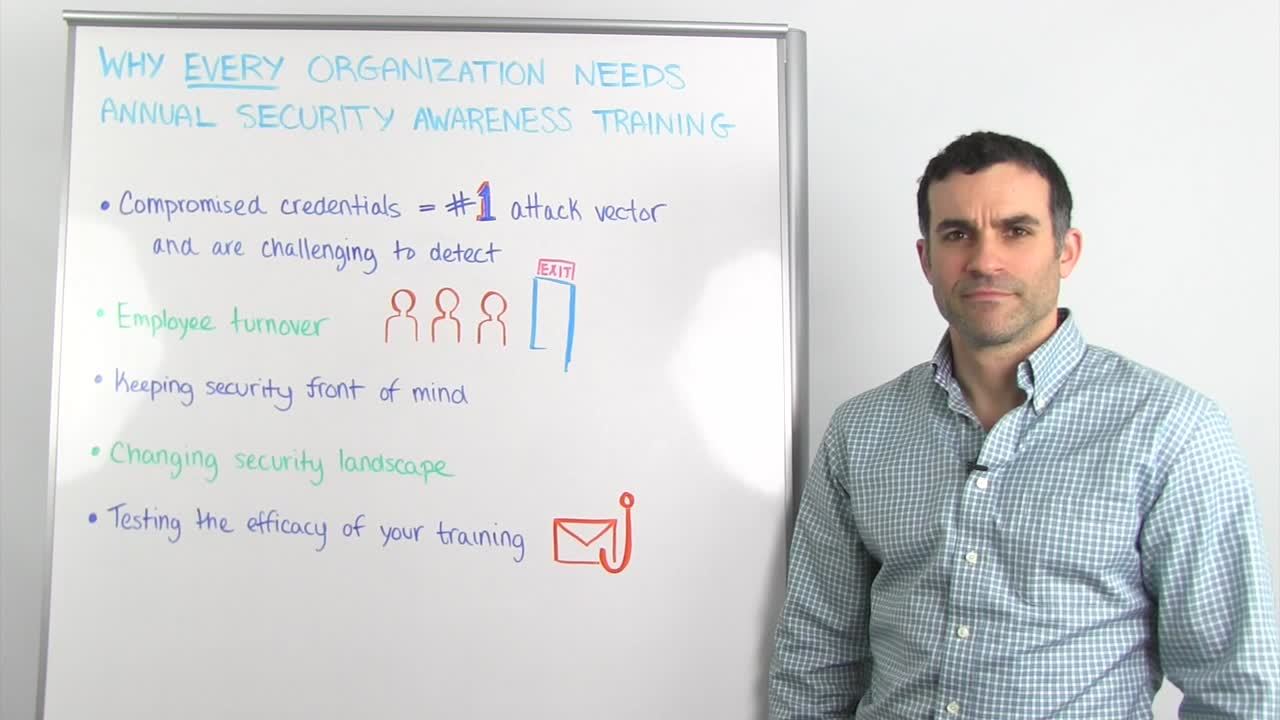
- Product: Managed Services , Security Advisory Services
In today’s Whiteboard Wednesday, Todd Lefkowitz, VP of Global Services at Rapid7, will discuss the importance of annual security awareness training programs.
Every year, the Verizon DBIR shows us the top threat vectors used in breaches and we continue to see that the most popular attack vectors exploit users through tactics like compromised credentials and phishing. While security teams are focused on locking down networks from attacks, users are easily exploited, allowing attackers to bypass the security controls implemented by your organization.
In this quick video Todd will make the case for adding security awareness training programs into your current security program.
Watch this week’s Whiteboard Wednesday to learn more.
Video Transcript
Hi there. This is Whiteboard Wednesday with Rapid7. My name is Todd Lefkowitz, I'm the Vice President of Global Services. So, today we're going to talk about the importance of a continued annual security awareness program for your organization. When we look at compromised credentials, they continue to be one of the leading areas of compromise in the industry. And so it's more important now than ever that companies have a good solid strong foundational security awareness program that they can run throughout their corporation. So when we look at some of the key areas that we want to focus on, employee turnover averaging at between, I'd say, 20 to 25% is very important to consider when you run your security awareness program, because don't assume that the individuals you have today are going to be the same individuals that you have tomorrow.
Show more Show less